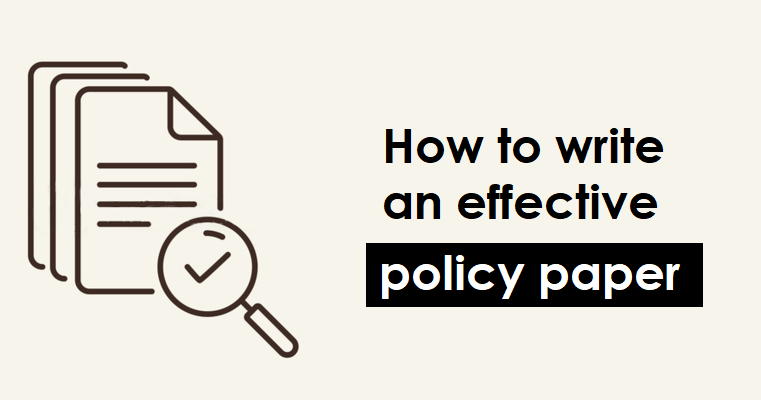The coronavirus crisis has majorly shifted our life patterns. It went even further to uncover the fragility of many national policies not only in health care but also in the social and economic fields. Many of the civil society actors are concerned with this issue and would like to contribute to building more sustainable national policies standing strong in the face of the different kinds of crises that may occur. Producing policy papers may constitute a great tool to reinforce the role of civil society in this matter. Therefore, here are some tips for writing an outstanding policy paper.
What is a policy paper ?
Policy papers are basically research documents that present analysis, findings and recommendations. Unlike other research documents, policy papers target non-academic audience. They usually address a critical social issue and target decision makers such as state officials, organization representatives and the general informed public. Given the features of the target audience for policy writing, it is characterised by two major characteristics; it focuses on being persuasive and concise. Decision leaders often do not have the time to read long papers given their multiple commitments yet one’s position has to be strong to catch theirs attention and to drive them to adopt it.
How to draft a policy paper ?
Define the audience
Before proceeding with policy writing, one should properly define whom he/she is addressing. In order to do that four questions has to be answered:
- Who am I writing this paper for?
- To what degree do they know about the issue?
- What are the questions that need answers?
- What are their interests, concerns, worries, needs?
Define the topic
An important element to draft a successful policy paper / brief is to focus on a single topic. The more specific the topic is the more clarity it gives to reader. Also it is highly recommended to define the purpose of the paper. Later the writer has to put forward vital points, facts, and findings that support his/ her position in their distilled form, not forgetting that it all has to be presented as a compelling story.
Plan your content
Planning the research investigation is the basis on which your content is based. This is done through three main steps; identify the central point, generate ideas and identify main ones from subordinate ones, Lastly, put all pieces together on the path to your central point. Important tools that may help in this phase are idea mapping and elevator pitch. Ideas mapping helps organize the thoughts, fastens the writing process, sharpens the final output, and shapes purpose and central idea.
What are the elements of a policy paper ?
Once the audience, topic, and content components are identified, it is time to elaborate your policy brief. These are the elements your policy paper has to contain:
Summary / Executive Statement
Although this part is displayed in the beginning of the paper, it is is drafted last. This part of the paper provides an overview on the discussed concern and plays a role of stimulation to entice the reader to continue reading.
Introduction
In this part the ready should understand the urgency and importance of the subject matter. In brief, it has to answer the why question. Of course, it has to have the reader relate to the issue.
Main Text
This part starts with a facts’ summary. It further develop the issue and its context. A tip that should be taken into account is that the context should not turn to full history of the issue. Then a structured analysis should be provided. The analysis should not be too technical or too academic.
Conclusion
This part summarizes the argument and the analysis and emphasizes the central idea.
Implication / Recommendation
This last section emphasizes on the what the decision leader needs to know and has to be consistent with the evidence and findings highlighted in the paper. An effective strategy can be used for the purpose:
- Discuss a range of policy options that address the problem.
- Set criteria that help judge these options based on the findings and priorities implied in the paper.
- Present the optimal recommandation accordingly to the logical application of the criteria on the policy options.
Tips for a persuasive policy writing
Remember, policy papers serve to bring decision leaders to your side. Therefore one should keep in mind the following tips while elaborating their policy paper/ Brief.
- Make sure your central idea is strong enough: Your evidence and argument has to be consistent and significant enough.
- Simplify the complexity of the argument: The simple and clear are the ideas the more reader is able to relate to the issue. That is why one should avoid the overuse of academic or technical jargon.
- Keep the writing tone soft: Using a strong tone will make all your effort go in vain. Softening the tone will appeal to the emotional side of the reader and therefore increase the possibility of having them convinced.
Voila ce que les autres utilisateurs ont pensé de cet article
